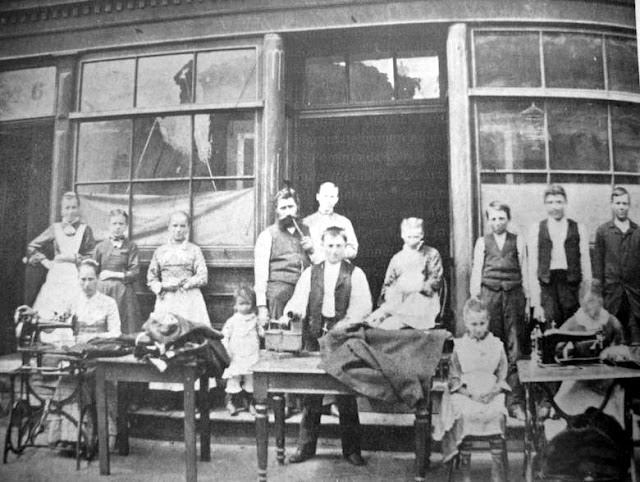Later Still: Cabrini-Green Neighborhood.
Chicago's first Swedish settlement emerged in 1846, when immigrants destined for the Swedish religious colony in Bishop Hill, Illinois, decided instead to settle in Chicago. The boundaries indicated for the oldest Swedish district seem very narrow. The examination of the census lists and city directories indicates that nearly all of the 27 Swedish families which, in the summer of 1850 when the census was made, had their homes in the 7th ward on the city's north side, lived within an area near the river bounded by Erie street on the north and Franklin street ("the east part of the river branch") on the east.
 |
| Chicago Swedish Family |
Many of these earliest settlers came to work on the Illinois & Michigan Canal. Although the Swedish settlement remained small for the next two decades, reaching 816 people in 1860 and 6,154 in 1870, it represented the largest single cluster of Swedes in the United States. During the 1870s, the Swedish population in the city doubled, outnumbered only by the German, Irish, and British immigrant groups.
As the Swedish settlement moved, the area north of the Chicago River on the Near North Side became known as "Swede Town." It was bounded by La Salle Street on the east, Division Street on the North, Chicago Avenue on the South, and the Chicago River to the west. A second, smaller Swedish area developed on the South Side in Douglas and Armour Square. The third grew on the West Side in North Lawndale. Smaller settlements also emerged in West Town and the Near West Side.
Swedes began leaving "Swede Town" after the devastation of the Great Chicago Fire of 1871. The process accelerated in the 1880s as more and more folks left these initial neighborhoods of settlement for less dense surroundings as the community became increasingly prosperous and worked its way up to Chicago's economic ladder. By 1920 Swedes dominated North Side neighborhoods such as Andersonville (also sometimes referred to as "Swede Town"), Lakeview as well as areas such as Grand Crossing and Englewood to the south. The nickname would reemerge in these new Swedish-dominated districts as the original "Swede Town" became Little Sicily also known as "Little Hell" and later still the Cabrini-Green Neighborhood.
Compiled by Neil Gale, Ph.D.

Thanks so much for the information you provided here. Each bit I find is like a giant jigsaw puzzle and each piece, little by little, starts to fall into place. I am tracing my family tree and also that of my husbands. The ironic thing is that I am Swedish and he is Sicilian... who would have ever thought that our immigrating cultures would be so closely connected in Chicago, all those years ago. Thank you.
ReplyDelete